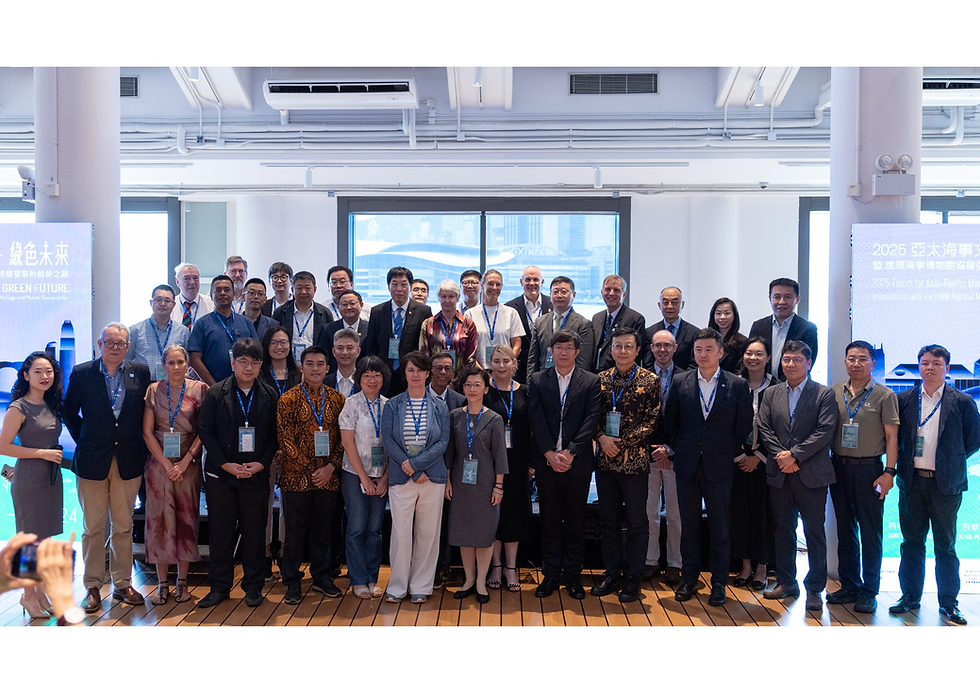A Copperplate’s Chronicle: Unraveling Ancient Maritime Ties Between the Philippines and Southeast Asia
- museomaritimo

- 2 days ago
- 4 min read

September 20, 2025 – Manila, NCR, Philippines
An Article by SM Floralde
Who would have thought that a small rolled-up strip of metal that looked like a piece of junk that clogged a working man’s sand-dredging equipment would turn out to be a national treasure? This ancient legal document is one of the most important artifacts discovered in the Philippines in the last century. It’s considered, for its historical worth, a one-of-a-kind object from the pre-colonial period that was accidentally excavated from a riverbed. It’s neither written on paper nor etched in bamboo or stone but engraved in a thin strip of red-brown metal. And it’s none other than the Laguna Copperplate Inscription.
Discovery
In 1989, a laborer discovered this artifact near the Lumban River in Wawa, Laguna, a province in the Southern Tagalog Region. While dredging sand in the river, Ernesto Lacerna Legisma uncovered this 20-by-30-centimeter metal strip, which would soon be identified as an ancient legal document that probably existed centuries before the Spanish colonizers arrived in the Philippines. Without any knowledge of its archeological value, he sold it to an antique dealer, who in turn sold it to the National Museum of the Philippines.
After a thorough study, the Dutch orientalist and indologist, Johannes de Casparis, and the Dutch anthropologist, Antoon Postma, would soon learn that its content and origin definitely demonstrate the archipelago’s cultural, legal, and trade connections with neighboring Southeast Asian polities. This artifact was placed sometime between the 9th and 10th centuries, which was at least six hundred years before the Spanish colonization of this country.

Importance
This antique receipt, inscribed in copperplate, is so significant because it is the earliest known written document in the Philippines. And this kind of artifact is considered rare. Accordingly, the studies of archeologists show there is a lack of pre-colonial written documents in the country for mainly three reasons.
First, the early Filipinos had a strong reliance on oral tradition for cultural transmission. For lack of printing know-how and technology, they were challenged on how to translate the oral literature into written forms. Second, they used perishable materials like leaves and bamboo for writing. So, when they undergo biodisintegration over time due to exposure to harsh elements of nature like air and water, these written documents would crumble in a natural way. Third, the Spanish colonizers seized them without putting them in proper storage and even destroyed them by fire to prevent the spread of their ancient knowledge.
Luckily, LCI survived the test of time, and now, we're closer than ever to understanding the importance of this artifact in terms of our pre-colonial culture, tradition, government, language, writing system, and maritime history.

Evidence
If there is one piece of archaeological evidence that can validate the maritime relations between the Philippines and Southeast Asian countries, it would be the Laguna Copperplate Inscription. On initial scrutiny, it can just be regarded as “a thin copper strip”. But upon closer look, there were etchings found on this strip “similar to the Early Kawi script’s form”.
After anthropologist Antoon Postma translated the script, it was found that it “shows the Saka date of 822, or 900 CE”. During this time period, he discovered that it was the “start of King Belitung of Central Java’s reign”. This can only suggest that there was “a contract that existed between the Philippines and its neighbors in the Southeast Asian region, particularly Malaysia and Indonesia.”
In addition, there were places and personal names mentioned in the inscription that furnish vital clues regarding the political and topographic background of the world during its time of inscription. For instance, the words Pailah, Tundun, Puliran, and Binuangan were toponyms (proper names of any geographical or cosmographical features) as well as Dewata and Medang. These identified toponyms were either Malayo-Polynesian or Sanskrit in origin.

Historical Significance
The Laguna Copperplate Inscription offers insights into our social structure, culture, and interaction with wider maritime networks as early as the 9th century. It suggests that our ancestors who established connections with other Southeast Asian regions were already well-educated and cultured much earlier than previously thought. Therefore, this ancient inscription, written in the Old Malay language using the Old Javanese script, highlights the existence of writing and literacy centuries before Spanish colonization.
With established political entities, legal systems, and international trade networks with other parts of Southeast Asia, this artifact proves that an isolated pre-Hispanic Philippines was just a myth. Being the oldest known written document in the Philippines, the LCI alone provides crucial evidence of a complex, organized, and connected pre-colonial Philippine society, a civilization organized into independent barangays led by a datu, with a social hierarchy of nobles, freemen, and dependents.
According to Filipino historian and History professor, Michael Charleston B. Chua a.k.a. Xiao Chua, “The Laguna Copperplate Inscription tells us of the kingdoms of Tondo, Laguna, Butuan[,] and Dewata, Indonesia paying off debts in gold as early as the 10th century. Taken as a whole, it can be said that we can consider our maritime civilization as a thalassocracy, a naval power in a military and commercial sense.”
In other words, the discovery of the LCI has made a greater impact on our understanding by providing additional pieces of evidence and a clearer perspective on the life of our ancestors during the pre-colonial period, which brings us closer to the complete story of the Philippines.
References:
1. XiaoChua (2013, May 27). XIAO TIME, 27 May 2013: KAHALAGAHAN NG LAGUNA COPPERPLATE AT IKA-400 TAON NG VOCABULARIO NI SAN BUENAVENTURA. XiaoChua.net.
2. Nida Cuevas (2022). The 9th to 10th century archaeological evidence of maritime relations between the Philippines and the islands of Southeast Asia. NationalMuseum.gov.ph.
3. Michael Charleston “Xiao” Chua (2020, July 18). Our ancestors as victorious warriors (Manila Times Walking History). XiaoChua.net.



Comments